We have open ended art materials and opportunities to use them every single day in my classroom.
Open ended art means that a variety of materials are provided and available for children to choose. They choose the materials they want to use, how they want to use them, and what they will make. All too often early childhood educators and parents do not value open ended art because it doesn’t always “look like” anything. They want to see an end product.

However, when children are given the opportunity to explore materials, even when they aren’t making something recognizable, they are learning how to use materials, and will later create more elaborate artwork.
Sometimes when children create artwork, the adults around them may not see the value in the creation until the child explains what they have created. I recall a 5-year-old boy several years back who glued black and brown beans all over a piece of white paper with several short black lines drawn among the beans. The black beans were on the left side of the paper and the brown beans on the right.
At the time, I thought he was only exploring materials. It was just a lot of beans on paper. He then brought the paper to me and told me it was the Civil War. (He had been watching documentaries on TV about the American Civil War, and he had recreated a battle scene.) The two color beans on each side of the paper were the Union and Confederate armies and the black lines represented gunfire. He was recreating what he had learned.
There’s a time and place for crafts, but be sure not to discount open ended art and its value to children. Children don’t need to always be told what to what make and how to make it. Children need to be allowed the freedom to be creative. Crafts are fun, but crafts do not come from the child’s creative mind.
Here are my 20 reasons for doing open ended art in Pre-K.
#1 “Green Thing” – paper, marker, wiggle eyes

#2 “Robot” – Paint sample chips, eyes made with a hole puncher

#3 “Spider” – Construction paper, crepe paper streamer, stapler
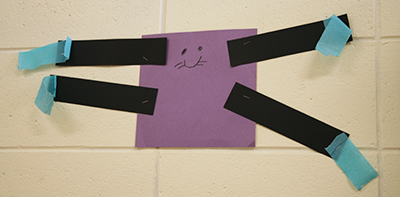
#4 “Stick Person” – Craft stick, tissue paper, crayon
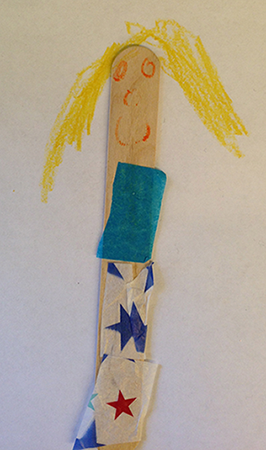
#5 “People Puppets” – Mini paper bags, craft sticks, yarn, colored tape, marker

#6 “Boat” – Paper, colored tape, marker
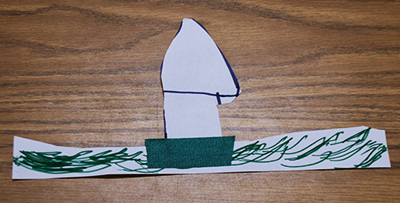
#7 “Tent” – Cardboard, colored masking tape, oil pastels
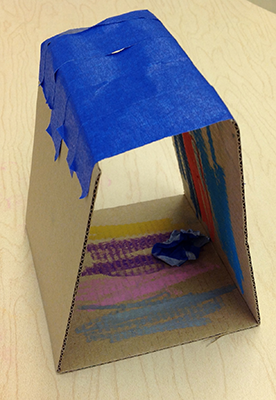
#8 “Sponge Bob” – Paper, colored tape, marker

#9 “Traffic Light” – Paper, craft stick, colored tape, marker

#10 “Tree” – Paper, colored tape, marker

#11 “Two-headed person” – Paper plates, colored tape, craft sticks, paper, markers

#12 “Pigeon” – Craft sticks, paper, marker

#13 “Rabbit” – Paper, craft stick

#14 “Giraffe” – Paper, craft stick, craft foamies

#15 “Airplane” – Construction paper, tape

#16 “Masks” – Paper plates, marker, yarn
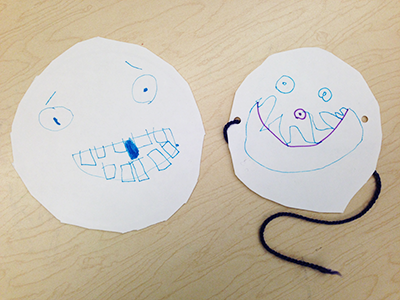
#17 “Dinosaur” – Paper from the scrap box , glue, staples
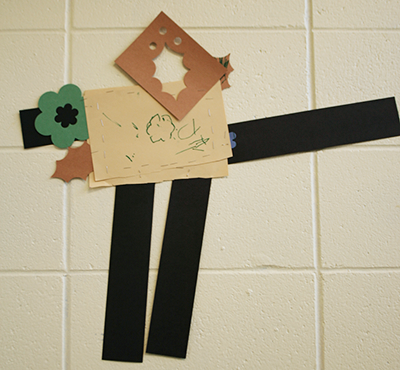
#18 “Deerstand” – Paper, colored tape, marker

#19 “Person” – White doilies, craft sticks, colored tape, marker
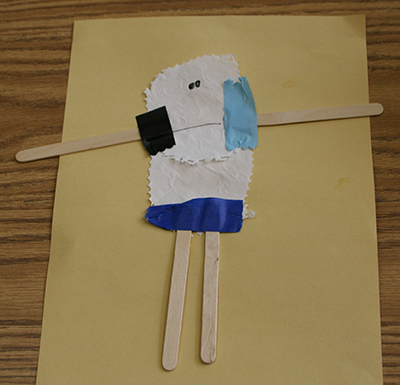
#20 “Love Spider” – craft sticks, colored tape, paper

In many of these examples, you can see that children have represented some part of their lives, whether it’s a TV show they watched, a book they read, or a real life experience.
I do some crafty things with the kids in my class, but not a lot, and even then, I try to let it be as much theirs as possible. They have the choice daily to go the art center and choose what they want to make. I have met teachers before who do not like open ended art, because in their words: it isn’t cute. I’ve also met many people who compliment crafts, but not the art a child created on their own. I’ve even been fussed at by parents who didn’t like to see the open ended art come home with their child.
I think it’s truly sad when people don’t value children’s creations. It’s sad when an adult-planned craft for kids is more valued than a child’s own creation. When adults feel that way, what do they really believe about children deep down?
What do you think? Agree or disagree, please share your thoughts in the comments below. (Just keep it polite, please.)

